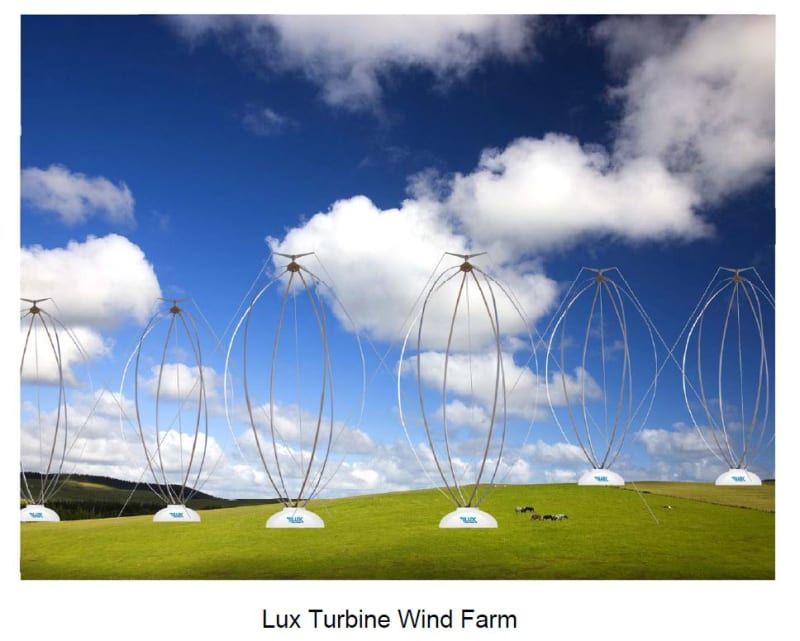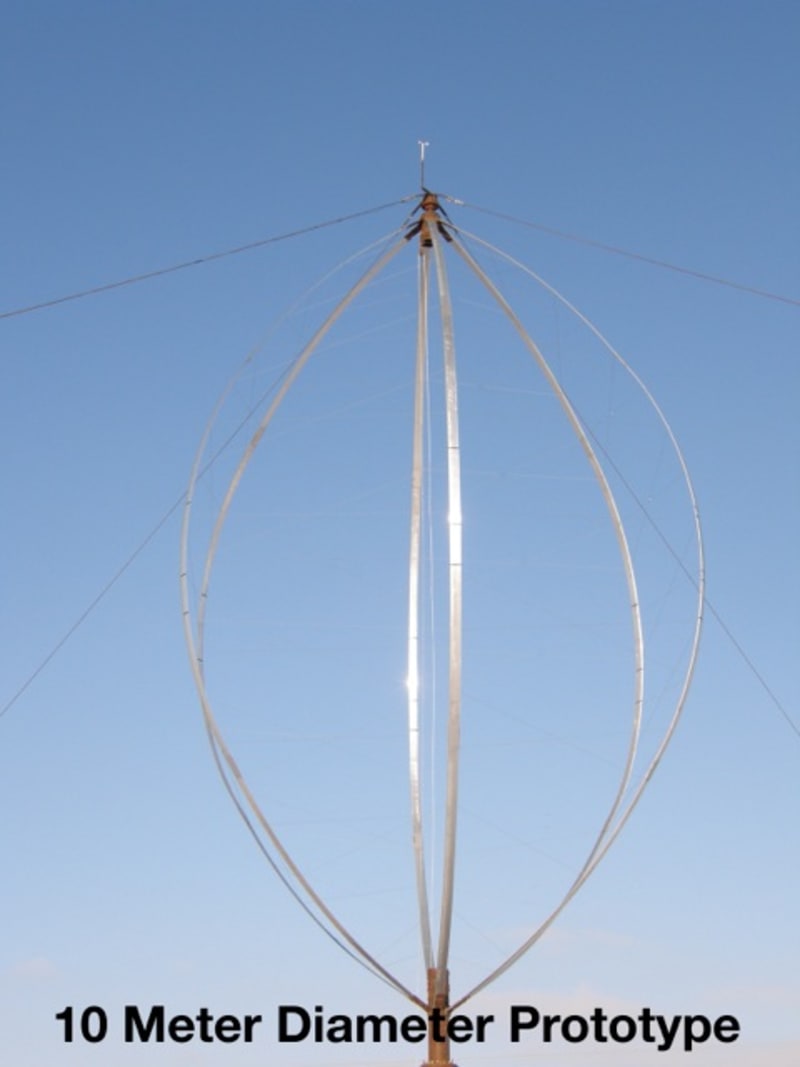

Imagine a renewable energy source that can produce energy at a cost comparable to natural gas or hydroelectric generators using fewer resources, while being environmentally friendly. Lux Wind Turbines are expected to cost less than 1/2 of conventional turbines and can be spaced closer together to extract more power with less land.
The Problem:
Conventional three bladed wind turbines are expensive because they are overweight. They require excessive material to support the cantilevered tower and each of the three cantilevered blades. (These cantilevered beams are supported only at one end and, from a design perspective, are only used when nothing else will work.)
The Solution:
The Lux Wind Turbine, a vertical axis wind turbine (VAWT) rotates around a vertical axis and does not require a tower or central column, lowering the total weight to less than half of the conventional turbines. This innovative design uses six blades, which are connected to a hub at the top and bottom of the rotor. The blades are also supported with cross cables running from blade to blade, forming a hexagon. Although the cross cables create aerodynamic drag, the power reduction is compensated by increasing the diameter and height by only 2.5%.
Main Advantages:
• 1/2 the capital cost
• 1/3 the weight with extremely low center of gravity (ideal for offshore applications)
• A 2MW Lux Wind Turbine has a LCOE that is less than half of a 2MW conventional turbine
• Mechanical components are at ground level
• Traction drive eliminates the need for an expensive gearbox
• Blades are fully recyclable, unlike conventional turbine blades
• More advantages can be viewed at luxwindpower.com
Computer models, developed by the National Research Council’s Institute of Aerospace Research (IAR), in Ottawa, Canada, show the blades have very little displacement, even in hurricane winds. These models, along with several prototypes we have built, illustrate the turbine has an excellent power output, is lightweight, extremely durable, and scalable to almost any size.
The IAR scaled the turbine to 160 meters in diameter. The predicted power output was 16MW and the stresses on the blades and cables indicated a life expectancy measured in centuries.
The Lux Turbine generally has a larger swept area than a conventional turbine, however, the nameplate rating can be achieved at 10m/s rather than 15m/s, resulting in a higher total annual energy production.
John Dabiri, at Caltech, (http://dabiri.caltech.edu/publications/Da_JRSE11.pdf) studying the effects of placing counter rotating vertical axis wind turbines in close proximity, estimates that on a given area of land, 10 times more power can be extracted than with conventional turbines. Dabiri has experimented with 18 VAWT, which support his prediction.
We expect to build a 25-meter diameter turbine in 2013 once the engineering is complete and the funding is in place. This turbine’s data will be verified by independent agencies.
We welcome comments and inquiries either here or by email. We would also gladly arrange contact with researchers at the Institute of Aerospace Research.
Video
-
Awards
-
 2013 Sustainable Technologies Category Winner
2013 Sustainable Technologies Category Winner -
 2013 Top 100 Entries
2013 Top 100 Entries
Like this entry?
-
About the Entrant
- Name:Glen Lux
- Type of entry:individual
- Patent status:pending





